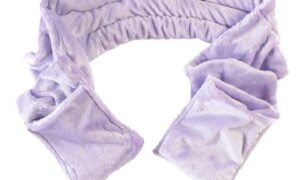Diabetes is a chronic condition that affects millions of people worldwide. One of the most common complications of diabetes is foot problems, which can range from minor issues such as dry skin and calluses to more serious problems such as nerve damage, ulcers, and infections. Proper foot care is essential for individuals with diabetes to prevent these complications, and one important aspect of foot care is choosing the right socks. In this article, we will explore the advantages of non-binding and compression socks for diabetic individuals to maximize foot health.
Non-binding socks are designed to fit loosely and comfortably without binding or bunching, which can help prevent pressure points and irritation that can lead to blisters or sores. They are made from materials that are breathable and moisture-wicking, which can help prevent moisture buildup and reduce the risk of infections. Non-binding socks are particularly important for individuals with diabetes who may have reduced sensation in their feet, as they can help prevent friction and pressure points that can lead to foot injuries.
One of the primary benefits of non-binding socks is that they can help promote good circulation. Diabetes can cause circulation problems, and poor circulation can lead to nerve damage, infections, and slow healing of wounds. Non-binding socks are designed to improve blood flow to the feet by not constricting the foot, which can help reduce the risk of complications and promote healing of any existing wounds.
Another benefit of non-binding socks is that they can help prevent the development of edema, which is swelling caused by fluid buildup in the feet and ankles. Edema is a common problem for individuals with diabetes, and non-binding socks can help alleviate this issue by not restricting the flow of blood and fluids in the feet.
Compression socks, on the other hand, are designed to provide gentle pressure to the feet and legs, which can help improve blood flow and reduce swelling. They are made from materials that are moisture-wicking and non-constricting, which can help prevent moisture buildup and irritation. Compression socks are particularly important for individuals with diabetes who have circulation problems, as they can help improve blood flow to the feet and reduce the risk of complications.
One of the primary benefits of compression socks is that they can help reduce the risk of blood clots, which can be a serious complication of diabetes. Blood clots can develop when blood flow is restricted, and compression socks can help prevent this by promoting blood flow to the feet and legs.
Another benefit of compression socks is that they can help reduce swelling and edema in the feet and legs. Swelling is a common problem for individuals with diabetes, and compression socks can help alleviate this issue by improving blood flow and reducing fluid buildup in the feet and legs.
In addition to promoting good circulation and reducing swelling, both non-binding and compression socks can help prevent foot injuries. They are designed to fit well and provide cushioning and support to the feet, which can help prevent blisters, sores, and other foot problems.
It is important to note that not all non-binding and compression socks are created equal, and it is important to choose socks that are specifically designed for individuals with diabetes. Look for socks that are made from materials that are moisture-wicking, non-constricting, and have extra cushioning and padding in the sole and heel areas. Additionally, it is important to choose socks that fit well and do not bunch or bind.
Non-binding and compression socks can play a significant role in maximizing foot health for individuals with diabetes. They can help promote good circulation, prevent edema and swelling, and reduce the risk of foot injuries. By selecting the appropriate type of sock and practicing good foot care, individuals with diabetes can take an active role in managing their foot health and reducing the risk of complications.



































